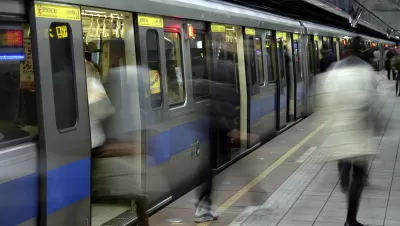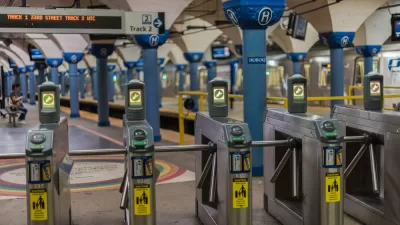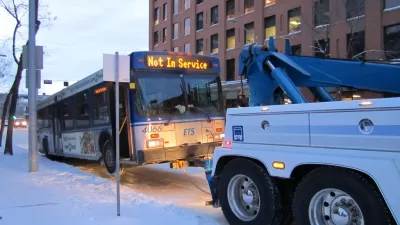Payton Chung summarizes a new report from the Transportation Research Board that reveals the indicators of successful transit projects.

Payton Chung reports on "Making Effective Fixed-Guideway Transit Investments: Indicators of Success," a Transit Cooperative Research Program (TCRP) report for the Transportation Research Board by researchers at the University of California, Berkeley. According to Chung, this "landmark report…identifies the factors that set successful transit investments apart from the rest." In his summary of the report, Chung notes that the study, which examined more than 140 elements of including location, demographic factors, and design of more than 55 rail and bus rapid transit systems, concluded that the secret to attracting high ridership is to "[serve] areas that are dense in both jobs and population and have expensive parking."
Per Chung, while the connection between high density jobs and population and transit is not new knowledge, the TCRP report's findings suggest "...access to these specific kinds of [high-wage] jobs, rather than to jobs in general, is a hallmark of transit-oriented metro areas...that perhaps easy transit access to high-wage jobs draws 'choice' riders out of cars and onto transit. Meanwhile, leisure jobs clustered around transit stations could be a proxy for '24-hour' mixed-use urban neighborhoods that draw transit riders throughout the day." Additionally, Chung notes that "the only design factor that seemed to have a significant effect on ridership was whether the route is grade-separated (in a tunnel or on a viaduct). In isolation, transit speed, frequency, or reliability did not have significant impacts, but the great advantage of grade-separated routes is that they can run quickly and reliably through high-density areas."
Chung adds, "The Berkeley researchers’ goal was to create an easy-to-use ridership forecasting model, built with data collected from finished projects across the country, that can help planners evaluate both individual transit routes and systemwide changes." The research team has provided a handy Excel file that can be used to predict riderships and cost estimates.
FULL STORY: The Secrets of Successful Transit Projects — Revealed!

Planetizen Federal Action Tracker
A weekly monitor of how Trump’s orders and actions are impacting planners and planning in America.

Maui's Vacation Rental Debate Turns Ugly
Verbal attacks, misinformation campaigns and fistfights plague a high-stakes debate to convert thousands of vacation rentals into long-term housing.

Restaurant Patios Were a Pandemic Win — Why Were They so Hard to Keep?
Social distancing requirements and changes in travel patterns prompted cities to pilot new uses for street and sidewalk space. Then it got complicated.

In California Battle of Housing vs. Environment, Housing Just Won
A new state law significantly limits the power of CEQA, an environmental review law that served as a powerful tool for blocking new development.

Boulder Eliminates Parking Minimums Citywide
Officials estimate the cost of building a single underground parking space at up to $100,000.

Orange County, Florida Adopts Largest US “Sprawl Repair” Code
The ‘Orange Code’ seeks to rectify decades of sprawl-inducing, car-oriented development.
Urban Design for Planners 1: Software Tools
This six-course series explores essential urban design concepts using open source software and equips planners with the tools they need to participate fully in the urban design process.
Planning for Universal Design
Learn the tools for implementing Universal Design in planning regulations.
Heyer Gruel & Associates PA
JM Goldson LLC
Custer County Colorado
City of Camden Redevelopment Agency
City of Astoria
Transportation Research & Education Center (TREC) at Portland State University
Jefferson Parish Government
Camden Redevelopment Agency
City of Claremont





























